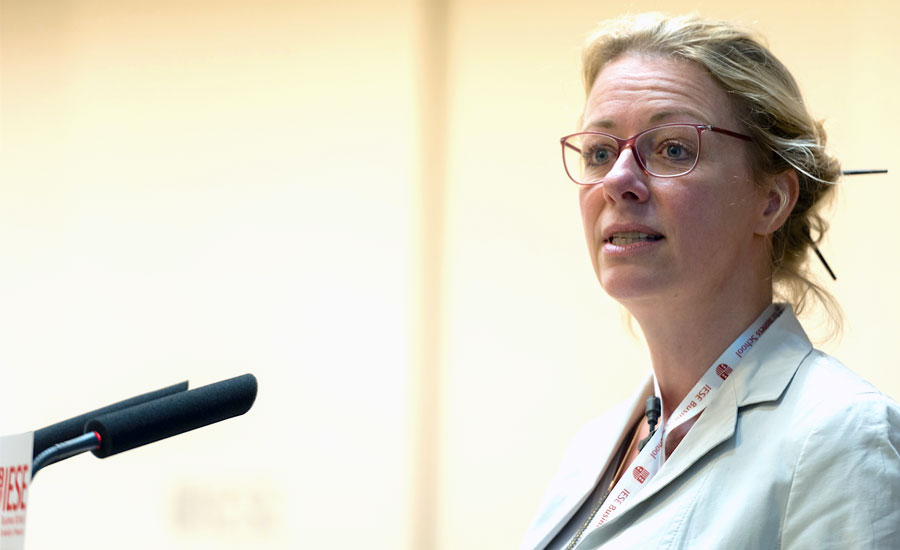Stories
Keeping Insurance Consumers Safe in the Insurtech Era
Top EU regulator speaks at IESE’s 8th Insurance Industry Meeting
March 16, 2018

“Without innovation, we would not have better insurance products. But innovation has to be to the benefit of the consumer.”
That’s how Katja Wuertz, a top European Union regulator for the insurance and pensions sector, summarized her Authority’s approach to the technological change sweeping the insurance industry, or “insurtech”.
Wuertz, who heads the Consumer Protection Department at the European Insurance and Occupational Pensions Authority (EIOPA), was a keynote speaker at IESE’s 8th Insurance Industry Meeting, held on the Madrid campus recently. The meeting centered around the new risks the industry is facing.
“We have a balanced view of insurtech, appreciating both the opportunities and possible risk it holds,” Wuertz said.
On the upside, big data provides insurance companies with a possibility for greater segmentation of risk and risk management tools, with precise consumer profiles allowing them to tailor their products individually. The use of algorithms can speed up the pay-out process for claims. On top of that, digital technology such as telematics (a “black box”) that monitors our driving will hopefully result in lower premiums.
On the downside, some consumers could find access to insurance products hindered or even denied based on sensitive economic data or their DNA-related data. And drivers who fit a “black box” in their car are embedded into an insurer’s ecosystem: a competitor would struggle to provide a comparable quote as the telematic data is provided to the insurer providing the policy.
Factoring Human Behavior into Rules
With regards to privacy, EU citizens’ data will soon be subject to the GDPR, the EU’s rigorous data protection law which comes into force in May. EIOPA welcomes the stricter rules, as there are currently issues around how and for what purposes consumers provide their consent to the use of their data.
Moreover, EIOPA makes sure that its regulatory work takes consumer behavior into account. For example, consumers don’t always read many pages of small print before clicking on “accept terms and conditions”, instead relying on rules of thumb. As a result, EIOPA subjects certain draft rules to consumer testing groups, making sure that consumers engage with and understand the documents.
To this end, the EU produced technical advice for regulating key information documents for packaged retail and insurance-based investment products (PRIIPS) in 2014. This regulation mandates, for example, that an insurance-based investment product provides a pre-sales document of maximum three pages long. This gives the consumer “a relatively swift way of assessing risk, performance and costs and compare products from different providers, allowing for better-informed decisions,” Wuertz explained.
Consistent Union-Wide Protection
Another pillar in EIOPA’s defense of the consumer is the Insurance Distribution Directive of 2016, which includes the Product Oversight and Governance (POG) act. “POG is nothing less than a cultural change in our industry,” Wuertz said. “There needs to be a top-down approach in the insurance sector, where members of the boards need to take responsibility for the implementation of POG, which is the cradle of all consumer protection in many ways,” Wuertz stated. That means that during the entire product cycle, consumers’ best interests must be at the center of decisions.
On the question of next regulatory steps, the insurance industry will be relieved to know that, after some intense years, “the regulatory wave will flatten out,” Wuertz said. “The bulk of the big regulatory deliverables have been provided,” she assured participants and the session moderator, Prof. Jorge Soley.


